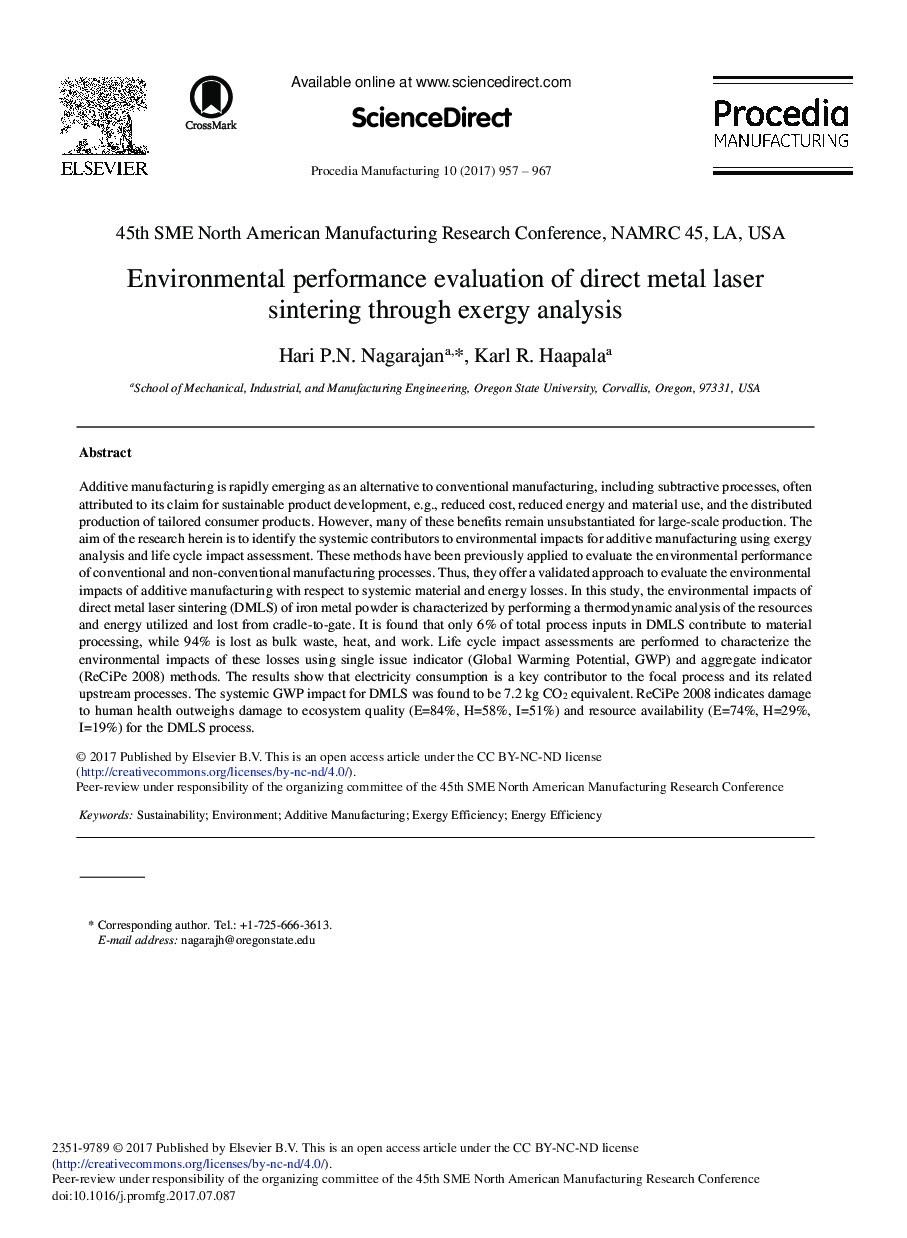| Article ID | Journal | Published Year | Pages | File Type |
|---|---|---|---|---|
| 5128838 | Procedia Manufacturing | 2017 | 11 Pages |
Additive manufacturing is rapidly emerging as an alternative to conventional manufacturing, including subtractive processes, often attributed to its claim for sustainable product development, e.g., reduced cost, reduced energy and material use, and the distributed production of tailored consumer products. However, many of these benefits remain unsubstantiated for large-scale production. The aim of the research herein is to identify the systemic contributors to environmental impacts for additive manufacturing using exergy analysis and life cycle impact assessment. These methods have been previously applied to evaluate the environmental performance of conventional and non-conventional manufacturing processes. Thus, they offer a validated approach to evaluate the environmental impacts of additive manufacturing with respect to systemic material and energy losses. In this study, the environmental impacts of direct metal laser sintering (DMLS) of iron metal powder is characterized by performing a thermodynamic analysis of the resources and energy utilized and lost from cradle-to-gate. It is found that only 6% of total process inputs in DMLS contribute to material processing, while 94% is lost as bulk waste, heat, and work. Life cycle impact assessments are performed to characterize the environmental impacts of these losses using single issue indicator (Global Warming Potential, GWP) and aggregate indicator (ReCiPe 2008) methods. The results show that electricity consumption is a key contributor to the focal process and its related upstream processes. The systemic GWP impact for DMLS was found to be 7.2Â kg CO2 equivalent. ReCiPe 2008 indicates damage to human health outweighs damage to ecosystem quality (E=84%, H=58%, I=51%) and resource availability (E=74%, H=29%, I=19%) for the DMLS process.
